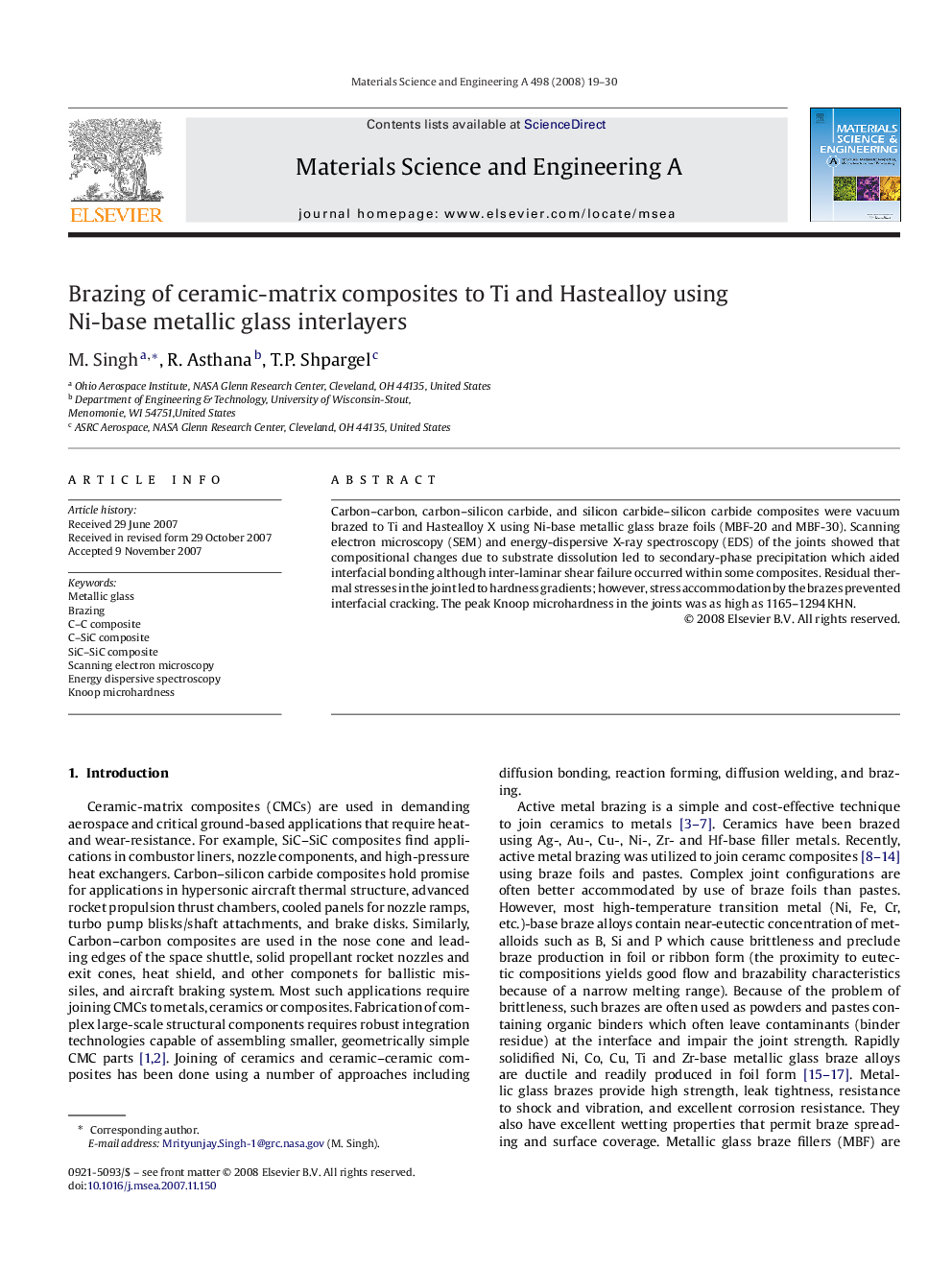| Article ID | Journal | Published Year | Pages | File Type |
|---|---|---|---|---|
| 1581402 | Materials Science and Engineering: A | 2008 | 12 Pages |
Abstract
Carbon-carbon, carbon-silicon carbide, and silicon carbide-silicon carbide composites were vacuum brazed to Ti and Hastealloy X using Ni-base metallic glass braze foils (MBF-20 and MBF-30). Scanning electron microscopy (SEM) and energy-dispersive X-ray spectroscopy (EDS) of the joints showed that compositional changes due to substrate dissolution led to secondary-phase precipitation which aided interfacial bonding although inter-laminar shear failure occurred within some composites. Residual thermal stresses in the joint led to hardness gradients; however, stress accommodation by the brazes prevented interfacial cracking. The peak Knoop microhardness in the joints was as high as 1165-1294Â KHN.
Keywords
Related Topics
Physical Sciences and Engineering
Materials Science
Materials Science (General)
Authors
M. Singh, R. Asthana, T.P. Shpargel,
